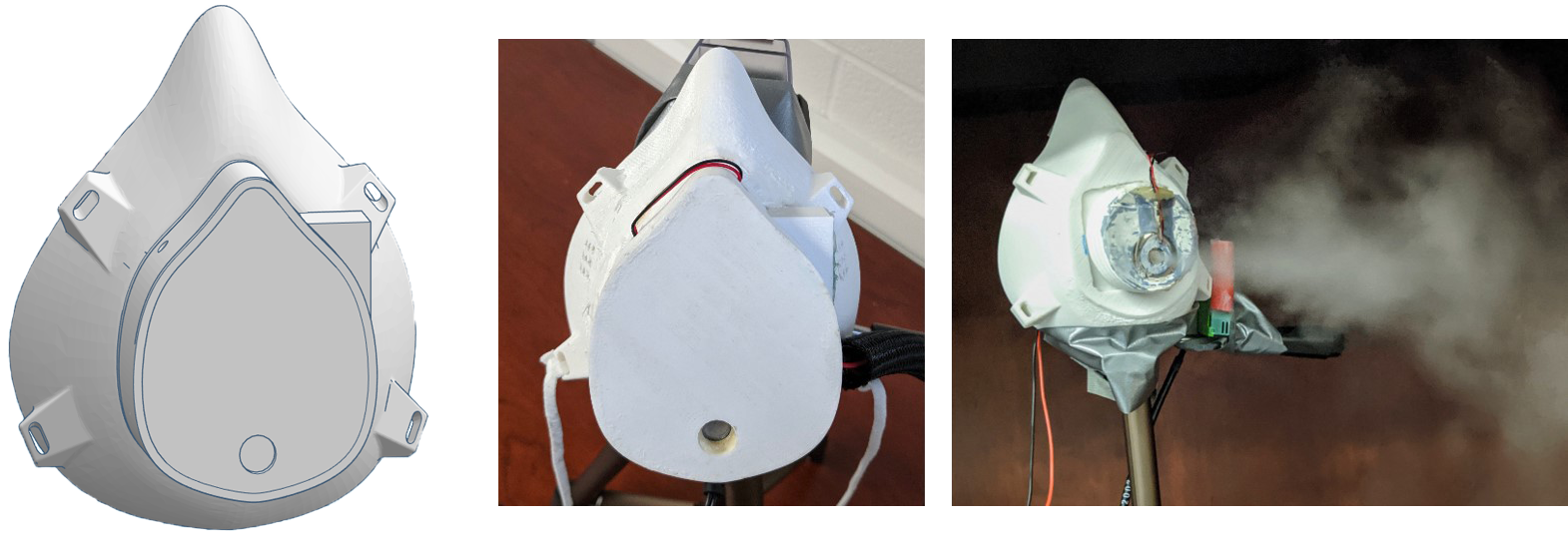Unprecedented situations inspire unprecedented actions. While the coronavirus pandemic has upended our lives, researchers across the globe have put their creative minds into action to restore normalcy. Members of the Warren B. Nelms Institute for the Connected World at the University of Florida came forward to join this global task force to fight the pandemic – they have put smart connected systems into use to monitor, detect, and prevent the spread of infection.
One such device developed at the Institute – the ADAPT smart mask – aims to extend the functions of a traditional mask to render stronger protection. The ADAPT mask implements the concept of ‘active’ defense against germs that float in the air in the form of respiratory droplets or tiny aerosolized particles. Recent studies show that clouds of these particles may linger for a long time in various indoor settings, allowing them to travel through air currents and spread the infection upon entering our bodies. A mask – which comes in many forms and functions – provides effective personal protection against these floating viruses. Existing masks, however, act as ‘passive’ devices that simply filter the air that we inhale.

“The ADAPT mask, on the contrary, is an active device that targets virus-laden airborne droplets and reduces their infectious capability”, says Dr. Swarup Bhunia, Director of the Warren B. Nelms Institute and the leader of the Research Team developing the mask. Mitigation is accomplished by controlling local air flow to ensure that these potentially deadly particles cannot come close to the mask, thus actively protecting the wearer. The mask generates a fine spray of cold-water mist to achieve this goal. The mist protects the wearer against airborne pathogens by “loading” (i.e., increasing the mass and size) of these floating particles, thus making them fall to ground much faster. In this way, it greatly reduces the infectious range of such airborne particles.
“It’s a closed-loop system”, explains Dr. Soumyajit Mandal, co-investigator of the project, “which senses the ambient to detect the presence of droplets and adjusts its mitigatory action accordingly.” The mask consists of two major components: a sensor module that senses and counts the number of particles and a mitigation module that generates patterns of cold mist. While the device can work in fully autonomous mode – with activation controlled by an algorithm running on the user’s smart phone – it can also be triggered manually to accommodate many usage scenarios. In fact, the ADAPT smart mask can interact with an authenticated smart phone in multiple ways. Firstly, it can periodically send the recorded particle counts to the phone for analysis. Secondly, the mask can be manually turned on/off from the phone based on ambient conditions and user preferences. Finally, acquired data can be displayed on a user-friendly app developed by the team. This app also alerts the user when device decontamination is necessary by keeping track of the total number of particles that have been detected by the smart mask.
The team has developed a fully functional prototype of the ADAPT smart mask using a 3D-printed structure and off-the-shelf electronic components. The estimated cost for the device is 10-15 USD when manufactured in bulk.
“The ADAPT mask protects its wearer from getting infected – while also reducing the chance that people around the wearer will be infected – by lowering the number of virus-laden particles floating in the air”, comments Dr. Bhunia. “It can be very useful for anyone who needs to be in crowded indoor settings, such as frontline workers”, he adds.